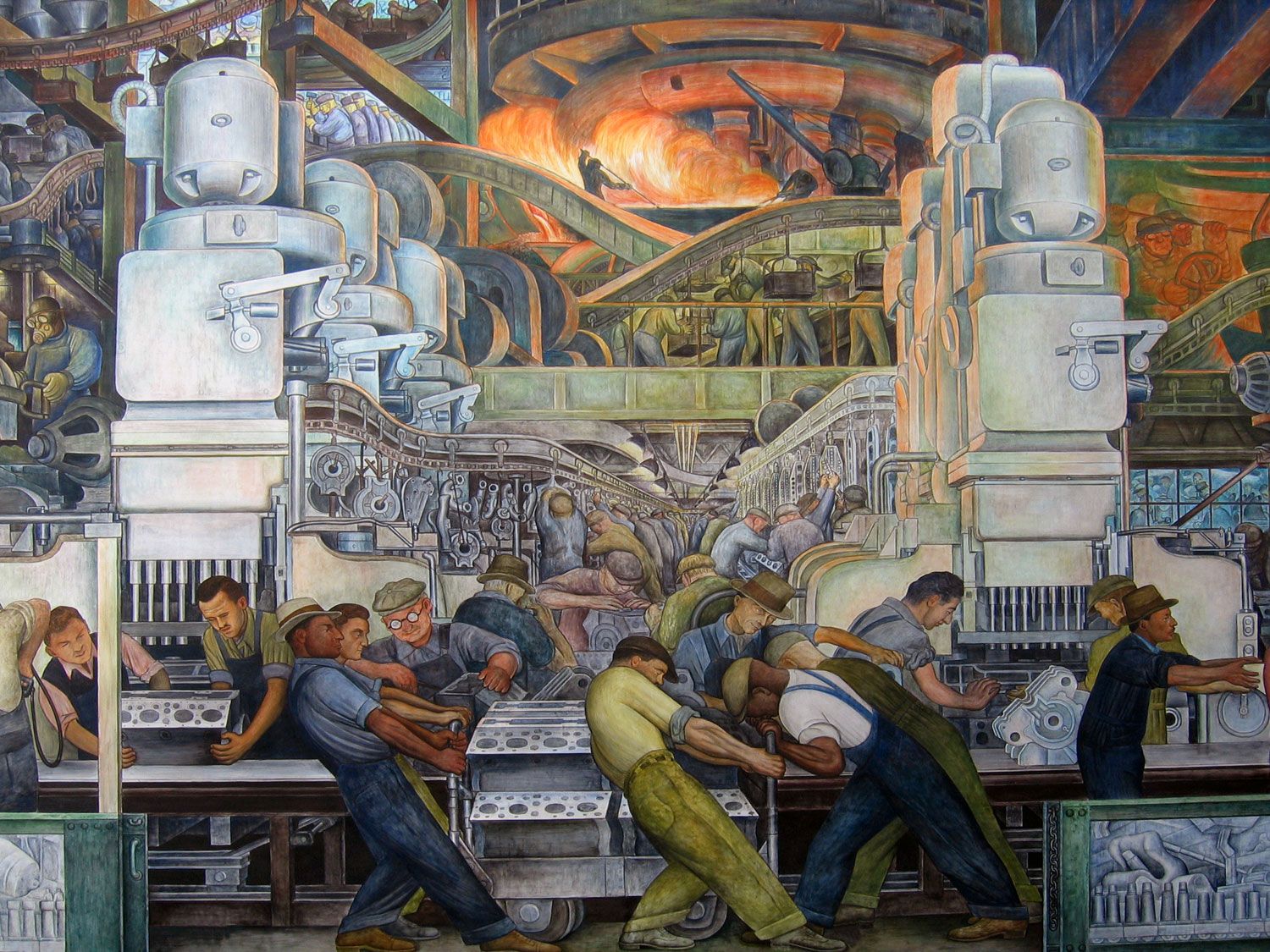
Walk around Detroit on a sunny day and you’ll see hipster cafés, tattoo parlors, Art Déco towers, Neo-Gothic churches, Industrial skylines, deserted Victorian mansions and glistening in the sun, the majestic river that rushes through the city. The place once known as America’s ghost town is pulsating with culture and ideas, and tourists are gathering to rediscover the city’s history and the new trendy spots that have established it as the ‘new Brooklyn.’

One of the first cities in America, and once a major manufacturing and music capital where Henry Ford’s automobile plant and Motown were born, Detroit has been ailing since the ‘60s. But in the last decade the city has seen new casinos and stadiums, renovated landmarks and new cash injections. Investors such as Dan Gilbert, the founder of Quicken Loans, recently bought hundreds of properties in the city while JP Morgan Chase invested over $34 million in the last year alone. New hotels and high-end condos are in construction everywhere; some are even revamping existing landmarks, such as the Metropolitan and Wurlitzer buildings, which will be transformed into boutique hotels.
As artists and young entrepreneurs are priced out of New York and LA, many are moving in, taking over vacant lofts and industrial spaces to set up alternative galleries, live venues, start-ups and revitalizing neighborhoods such as Downtown, Midtown (once known as Cass Corridor) and the West Village. The Galapagos Art Space has recently moved, taking over two buildings and helping launch a new art biennial.

And like the Brooklyn or East London of the last decade, the city has been transformed by gentrification. Chic restaurants have taken over vacant homes and broken down diners; tiny boutiques sell luxurious products made in Detroit, such as the now iconic Shinola; cafés brew single-origin drip coffee and bake artisanal pastries; distilleries craft choice spirits. The city has become synonymous with cool, reconnecting with its music and industrial roots, and opening up to the world. Last year, Richard Branson launched a direct Virgin flight from London with a lineup of glamorous concerts and city tours, bringing in a new wave of Europeans obsessed with the city’s industrial and cultural heritage.
This year Detroit also saw the opening of the new John Varvatos boutique. The Detroit-born designer, who created a logoed, limited-edition Chrysler 300C in 2013, inaugurated the downtown space with a star-studded concert by Alice Cooper. The grand space is nestled in a historical 19th century building and feels like a plush music venue (it was inspired by legendary punk club CBGBs, which Varvatos took over in New York), with velvet curtains, dim lighting and a rock ’n' roll soundtrack.

Follow the narrow alley behind the store to Wright & Company, a hidden lounge in the same building’s fourth floor. With its original massive windows, brick walls, industrial light bulbs, crystal chandeliers and leather banquettes, it is the perfect meeting spot for after-work and pre-show diners with tickets to activities at nearby theaters and stadiums.
The adjacent neighborhood to Downtown was once known as the ‘Ghetto,’ a favorite of some of the most influential punk musicians and garage rockers of the local scene, who played at, and frequented, its clubs—including The White Stripes. But now the city has changed its name from Cass Corridor to Midtown, and helped remarket it as the most desirable area in town. Jack White has returned to his hometown and opened a large store and record press here, right next to Shinola, which co-owns the building. In the yellow-and-black store, he sells souvenir items such as mugs and t-shirts, rare reissues of Motown classics, and records from his label’s bands. A small stage in the back hosts concerts by local bands, during which the local beer brewer's Jolly Pumpkin is poured.

At the Shinola flagship, handmade watches are sold along with leather keychains, wallets and high-end bikes, assembled on location. Goods by local artists and start-ups are also offered such as DROUGHT cold-pressed juices and healthy snacks. For those who want to delve into the local watchmaker’s world, the company offers tours at the nearby factory, where each step of the assembling process is demonstrated.

Nearby, on a once-abandoned corner, Selden Standard, an elegant restaurant owned by James Beard-nominated Andy Hollyday and his wife Natasha, serves delicate seasonal cuisine. Meats are cooked in a brick wood oven, and local vegetables are pickled and preserved in-house. Similarly independently-minded businesses have settled in the adjacent Corktown, where the abandoned Michigan Train Station attracts tourists and ‘ruin porn’ photographers. Now the area is studded with charming small boutiques and bars, such as the Sugar House, which serves over a hundred craft and classic cocktails in a dimly lit parlor, and the design B&B Honor and Folly. Just a block away, the Two James Distillery creates its ryes and bourbon in-house, and serves them up in a festive bar alongside bar nibbles.

The Eastern Market is where most of the city’s young artists are settling. The sprawling food and flower market buzzes with color and life on Saturdays and most summer days. Nearby, several art galleries like the Red Bull House of Art and restaurants such as the much-loved New York pizza parlor Supinos and its sister Italian restaurant, La Rondinella, are local favorites.
The latest neighborhood to re-emerge is the West Village, where a pie shop, record store and venue, tea salon and artisan market create a charming, homey atmosphere. There, Craft Work, a restaurant and live venue, hosts an excellent local live jazz band every Monday. The owner Hugh worked in music in New York and LA before moving back to his hometown to open his own place. This century-old building formerly housed an apothecary and a jazz bar. Hugh’s mission is to keep Detroit’s tradition and history alive.









